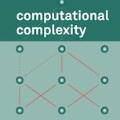Full-duplex (FD) systems have been introduced to provide high data rates for beyond fifth-generation wireless networks through simultaneous transmission of information over the same frequency resources. However, the operation of FD systems is practically limited by the self-interference (SI), and efficient SI cancelers are sought to make the FD systems realizable. Typically, polynomial-based cancelers are employed to mitigate the SI; nevertheless, they suffer from high complexity. This article proposes two novel hybrid-layers neural network (NN) architectures to cancel the SI with low complexity. The first architecture is referred to as hybrid-convolutional recurrent NN (HCRNN), whereas the second is termed as hybrid-convolutional recurrent dense NN (HCRDNN). In contrast to the state-of-the-art NNs that employ dense or recurrent layers for SI modeling, the proposed NNs exploit, in a novel manner, a combination of different hidden layers (e.g., convolutional, recurrent, and/or dense) in order to model the SI with lower computational complexity than the polynomial and the state-of-the-art NN-based cancelers. The key idea behind using hybrid layers is to build an NN model, which makes use of the characteristics of the different layers employed in its architecture. More specifically, in the HCRNN, a convolutional layer is employed to extract the input data features using a reduced network scale. Moreover, a recurrent layer is then applied to assist in learning the temporal behavior of the input signal from the localized feature map of the convolutional layer. In the HCRDNN, an additional dense layer is exploited to add another degree of freedom for adapting the NN settings in order to achieve the best compromise between the cancellation performance and computational complexity. Complexity analysis and numerical simulations are provided to prove the superiority of the proposed architectures.
翻译:引入了全翻(FD)系统,为第五代无线网络以外的第五代无线网络提供高数据率,方法是在同一频率资源中同时传输信息。然而,FD系统的运作实际上受到自我干预(SI)的限制,而高效的SI取消者则寻求使FD系统能够实现。通常,使用基于多层的取消器来缓解SI;然而,它们却受到高度复杂性的影响。本篇文章提议建立两个新型混合层神经网络(NNN)结构,以取消SI的低复杂程度。第一个结构被称为混合循环经常性NNNN(HCRN),而第二个时间结构则被称为混合循环经常性稠密NNNNN(HRNNN)系统的运作。相对于使用密集或反复层的状态NFS取消系统系统,拟议的NNNNC系统以新的隐藏层网络的混合结构(e.g. convoral,经常和/或复杂程度),为了模拟SI的计算复杂程度比多级(HCNFR)更低的计算复杂性,在采用新的数字结构中,在采用新的数字结构中,最高级的MNFID-de-de-de-de-deal dal 的计算中,在采用新的计算中,在使用一个新的数字的计算结构中,在采用一个最低级的计算中,在采用新的数字的计算中,在采用新的数字的计算中,在采用新的数字的计算结构的计算结构的计算结构的计算结构中,在采用一个不同的计算中可以实现更精确的计算。




